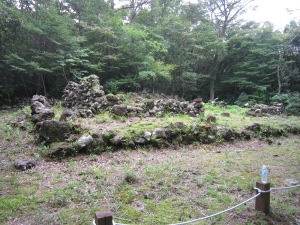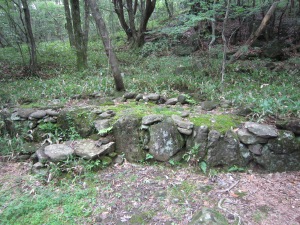Remnants of the Japanese Colonial Era; Part II: Buddhist Resistance and Accommodation
Perhaps one of the earliest most overt act of outright rebellion against the Japanese in Cheju Island was the Mu-o Pŏpjŏngsa 무오법정사 event on October 7, 1918, an armed insurrection led by Buddhist monks Kim Yŏnil 김연일, Pang Tonghwa 방동화, and Kang Ch’anggyu 강창규 five months before the famed 1919 March First Demonstrations (Samil Undong 삼일운동). For a few days, a rebel movement that began with a group of few dozen Buddhist monks plotting to drive out Japan’s colonial domination of the island through force of arms at the mountainside temple of Pŏpjŏngsa ballooned to a 400-strong rebel force as the group descended upon Chungmun 중문. Though the event is known as “Mu-o Pŏpjŏngsa,” the first actual outbreak of violence was at the colonial police station in Chungmun where rebels assaulted colonial gendarmes and freed prisoners. Whether it was truly a “nationalistic” rebellion or instead an explosion of anger directed at colonial policies (and not any notion of a ‘nation-state’ per se) that threatened local livelihoods, it is nonetheless telling that the rebels marched across the Cheju countryside unchallenged in the beginning and that the Japanese officials were unaware of the rebellion until the first outbreak of violence. Cheju residents, highly resentful of colonial authorities’ interference with local lives, chose not to inform officials or even joined the ranks of the rebel force.
Armed with mostly bamboo spears and a handful of antiquated matchlock rifles, the rebellion was crushed in only a matter of days. Many rebels were arrested and a few died in prison. Leaders Kim Yŏnil, Pang Tonghwa, and Kang Ch’anggyu were imprisoned for a time and released, but were under close colonial surveillance for the next two and a half decades of Japanese rule. After the brutal suppression of the uprising and the eventual March First uprising a half year later, as had been the case with most Cheju Islanders in the course of the colonial period, how Cheju Buddhists responded to increased Japanese colonial interference is unclear. A small number continued to support resistance activities. Most gave up on openly resisting and decided to adjust to their reality under Japanese rule and it is known that Cheju Islanders were among the most active in traveling to the burgeoning city of Osaka, Japan for work.
People may have engaged in their own forms of passive resistance by maintaining their own Cheju traditions or simply ignoring colonial programs aimed at integration into the rising Japanese Empire. The role of nun visionary An Pongnyŏgwan, who is regarded somewhat as a local saint and credited as a key figure in the success of Cheju’s Buddhist revival, is unclear as the information we possess today is largely through word of mouth. These rumors regarding her activities reflect the ambivalent nature of Cheju Buddhists’ relationship with their colonial rulers. Japanese colonial authorities, anxious to bring common Koreans under their control, supported Japanese Buddhists’ missionary activities; Hyangsadang shrine, once a Confucian shrine for the island’s ancestral forbears, was converted to a branch temple of Higashi Honganji temple during the colonial period. An Pongnyŏgwan did not appear to support the 1918 rebellion and was perhaps more concerned with pursuing her spiritual mission (somewhat in disagreement with the more millenarian Pang Tonghwa and Kang Ch’anggyu) and the very real threat of Japanese retaliation, but anecdotal evidence suggests that she secretly raised funds to support the rebels and even continued to do so for the March First Movement. On the other hand, the fact that she openly avoided politics and attempted to maintain an autonomous Cheju Buddhist sphere from the rising influence of Japanese sects is rather telling about the cautious attitude many Cheju people maintained. Unlike the Korean mainland, while the Japanese colonial policymakers’ requirement for many Buddhist clergy to marry (a longstanding tradition in Japanese Buddhism, but there were a few known cases of married clergy in Korea even before the colonial period) remained a controversy and embarrassment until the separation of the Chogye Order resolved the matter some decades later, it was not so much an issue in Cheju due to the islanders’ preference for family-based religious practice. The question of simple accommodation to present realities versus the matter of outright collaboration did not leave an open wound in Cheju’s Buddhist community as it did in the mainland. As had long been the case in Cheju’s history, the need to survive ultimately trumped any sort of idealistic ideological fervor.
The nature of Mu-o Pŏpjŏngsa has been a topic of debate for some time – some scholars such as Yi Yŏnggwŏn (2004) argued that the rebellion cannot be considered “Buddhist” because although the leaders identified themselves as devout Buddhists most of the followers were of a syncretic religion known as “Poch’ŏn’gyo,” but others such as Kim Kwangsik (2005) note that the lines between “Buddhism” and other religious movements in Cheju in the early 20th century are very blurred and that even the leading members of such movements had some affiliation with one Buddhist community or another. The second line of thought has some considerable support to it as the Pang Tonghwa and Kang Ch’anggyu, both Cheju locals and perhaps the actual leaders of the event (Japanese records instead credit mainlander Kim Yŏnil as the rebel leader), were known to follow a highly inclusive form of millenarian Buddhism that incorporated existing beliefs in Cheju. Both leaders sought to realize utopian visions of a this-world Buddha land in Cheju through the elimination of colonial exploitation. Some decades later, a number of Buddhist clergy did take up arms against the militant ultra-right wing Northwest Youth League’s slaughter of Cheju islanders during the fallout of the April Third Incident from 1948 to 1950, an echo of the community’s strong localist identity that first sounded in the 1918 rebellion. Regardless of where one stands on the debates and regardless of the short-lived nature, Mu-o Pŏpjŏngsa remains a strong source of pride for many local clergy and Buddhists as proof not only of Buddhists’ contributions to Cheju history but also the stalwart determination of their forebears.
—-
Site of Pŏpjŏngsa near Yŏngsil Trail. The temple was first built in the early 20th century, among the first major Buddhist temples established during Cheju’s Buddhist revival from the late 19th century to early 20th century. It was destroyed completely during the turmoil from the April Third Incident in the period from 1948 to 1950. The site today is a local heritage site and a memorial honoring the rebellion was recently constructed nearby.
Remains of a Buddhist altar. According to the granddaughter of Pang Tonghwa, rebels used a clever combinations of Buddhist chanting to convey secret messages to one another during their meetings for plotting rebellion.
—-
Sources:

